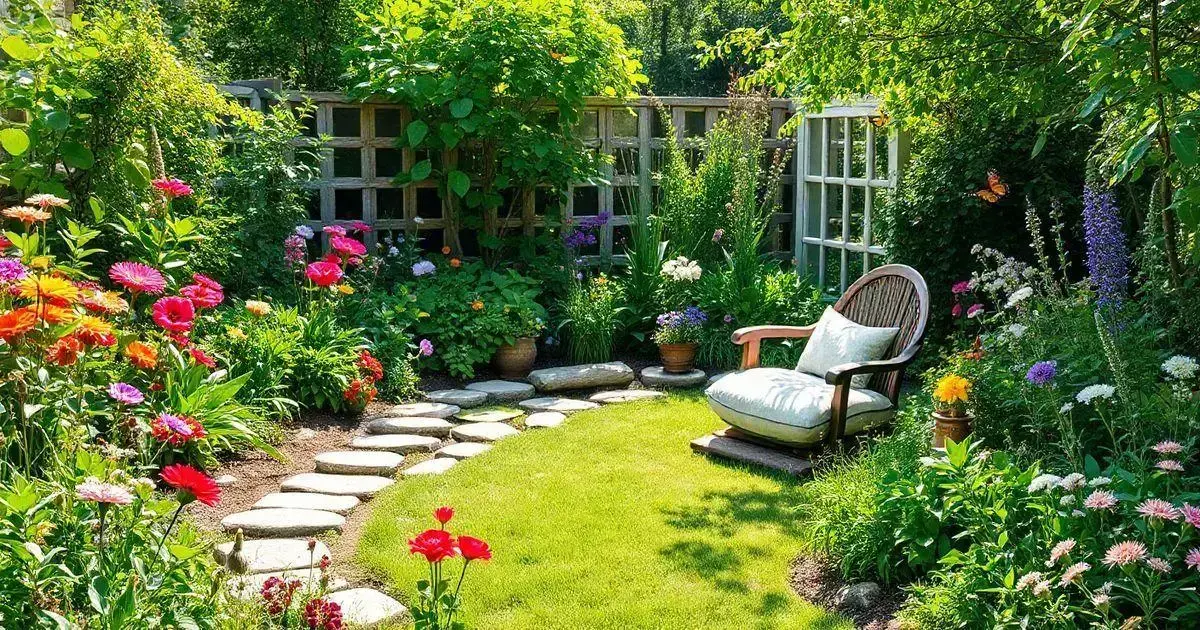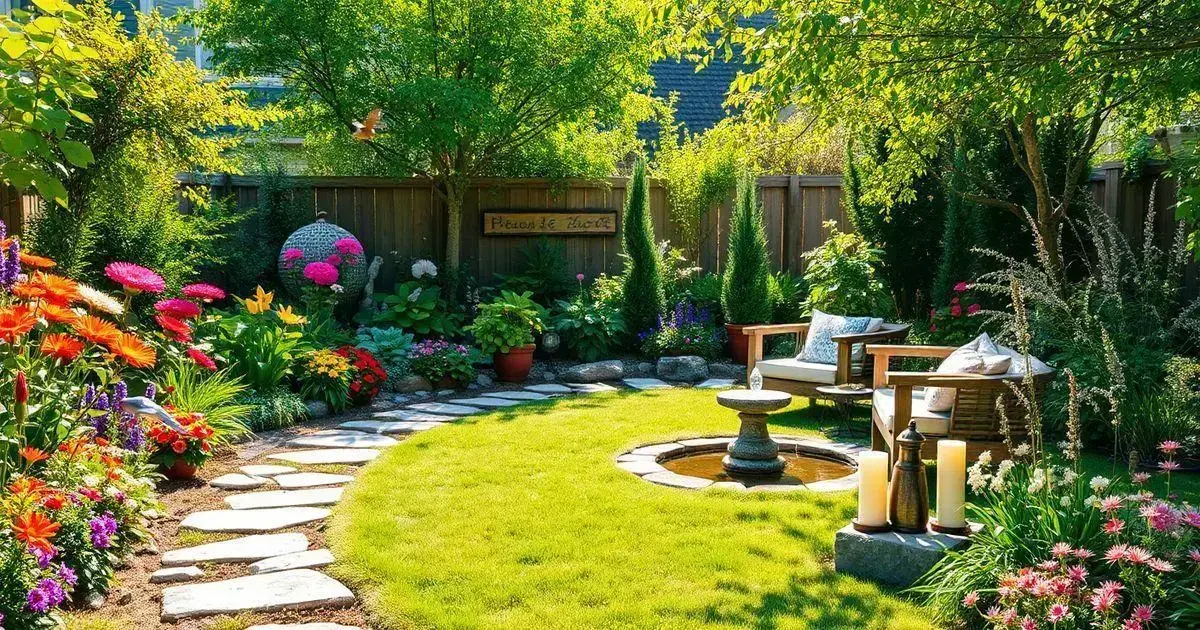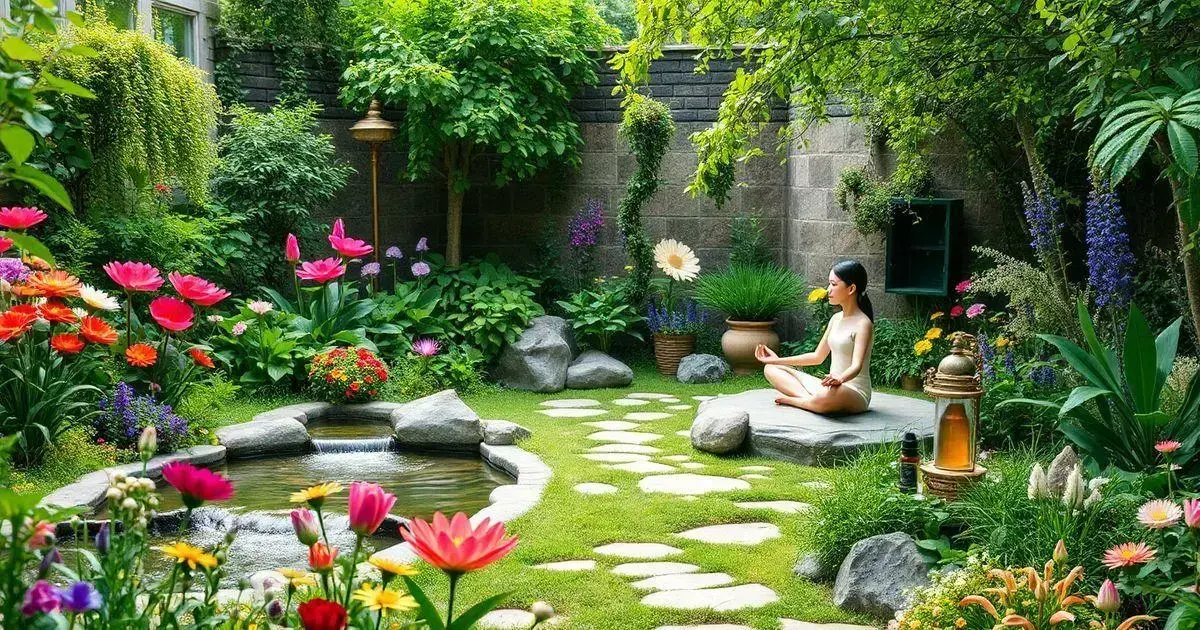The Garden of Wellness is a sanctuary for your mind and body. By integrating elements of nature, tranquility, and mindful practices, you can transform any space into an oasis of peace.
In this blog post, we will explore what a garden of wellness truly is, the numerous benefits it offers, and practical steps to create your own serene retreat.
Join us on this journey to cultivate harmony and rejuvenation through the art of gardening.
What is a Garden of Wellness?
A Garden of Wellness is a special place designed to promote health, tranquility, and overall well-being. It combines elements of nature like plants, water, and open spaces to create a soothing environment.
These gardens can be found in backyards, community parks, or even on balconies.
The idea is to incorporate features that stimulate the senses, making you feel peaceful. Common aspects include fragrant flowers, vibrant colors, and soothing sounds like flowing water.
Not only do these features enhance your physical space, but they also uplift your mood and spirit.
Furthermore, a Garden of Wellness encourages outdoor activities such as gardening, meditation, or simply enjoying nature. Research shows that spending time in green spaces can reduce stress and improve mental health.
In addition to flowers and plants, consider adding seating areas or paths for walking. This allows for a deeper connection with nature and can be a great spot for reflection, creativity, or even exercise.
Benefits of Creating a Garden of Wellness

Creating a Garden of Wellness offers numerous benefits that enhance both physical and mental health. First, such gardens promote relaxation and reduce stress levels, allowing you to escape the hustle and bustle of daily life. Just spending time outside can lift your mood significantly.
Moreover, a Garden of Wellness encourages physical activity. Activities like planting, weeding, or walking in the garden can be great forms of exercise. Engaging in gardening also connects you to nature, which is known to improve emotional well-being.
These gardens can also be a source of fresh produce. Growing your own fruits and vegetables not only ensures you eat healthier but also gives you a sense of accomplishment. The act of nurturing plant life can boost your self-esteem and provide joy.
Furthermore, a well-designed garden can attract various wildlife, including birds and butterflies. This enhances biodiversity and adds to the overall experience of being outdoors, making your garden feel alive and vibrant.
Lastly, having a Garden of Wellness can create a sense of community. Whether it’s through sharing gardening tips with neighbors or participating in local gardening clubs, these gardens foster connections and promote social interaction.
Essential Elements for Your Garden of Wellness
To create a Garden of Wellness, you need to consider several essential elements that contribute to its tranquility and beauty. First, the choice of plants is crucial. Opt for a variety of flowers and greenery that provide not only aesthetic appeal but also promote a sense of calm. Plants like lavender, jasmine, and chamomile are known for their soothing scents and can enhance relaxation.
Next, include soothing features like a small pond or a fountain. The sound of running water can be incredibly calming and adds to the overall ambiance of the garden. Consider adding wind chimes or gentle music to create a multi-sensory experience.
Seating areas are another critical component. Incorporate comfortable benches or hammocks where you can sit and unwind. These spots invite you to relax and enjoy the beauty of your surroundings, encouraging mindfulness and reflection.
Additionally, create walking paths using natural materials like stones or mulch. This allows you to wander through your garden and fully immerse yourself in the experience. The act of walking can be meditative and beneficial for physical health.
Lastly, lighting plays an important role in your Garden of Wellness. Use soft, warm lights or lanterns to create a cozy atmosphere during the evening. This not only makes the garden usable after sunset but also enhances its magical allure.
How to Design Your Garden of Wellness

Designing your Garden of Wellness requires careful planning and creativity. Start by deciding on the size and location of your garden. Choose a spot that receives plenty of natural light and has good drainage, as this will promote healthy plants.
Next, think about the layout. You can create separate areas for different activities, such as a meditation corner, a seating area, and a planting space. Using curved paths instead of straight lines can make the garden feel more inviting and less structured.
Selecting a harmonious color palette is also essential. Use a combination of vibrant flowers and soothing greenery. This creates a visual balance that can enhance your mood and promote relaxation.
Incorporate sensory elements like textured plants, fragrant flowers, and soothing sounds. A small fountain or wind chimes can add to the peaceful atmosphere, making the garden a true haven of relaxation.
Finally, do not forget to include space for personal touches. Whether it’s a favorite statue, decorative stones, or art pieces, these elements personalize your garden and make it uniquely yours. By focusing on these key components, you can design a Garden of Wellness that nurtures the body and soul.
Maintaining Your Garden of Wellness
Maintaining your Garden of Wellness is essential for keeping it a peaceful and inviting space. Regular care will ensure plants thrive and the garden remains a source of joy.
Start by watering your plants appropriately. Different plants have varying water needs, so learn the requirements for each species and adjust your routine accordingly.
Weeding is another important task. Removing unwanted plants helps reduce competition for resources. It is best to weed regularly, preferably after rain when the soil is soft, making it easier to pull out weeds.
Pruning your plants is also vital. Trim dead or overgrown branches to keep your plants healthy and promote new growth. This can help maintain the desired shape of your plants and ensure they remain visually appealing.
Fertilization should be done periodically. Use organic fertilizers to nourish the soil without harming the environment. This will provide your plants with essential nutrients, supporting their growth and vitality.
Lastly, pay attention to pests. Monitor your garden regularly for any signs of damage or infestation. Employ natural pest control methods like introducing beneficial insects, which can help keep pests in check without using harmful chemicals.
Incorporating Mindfulness in Your Garden of Wellness

Incorporating mindfulness into your Garden of Wellness can enhance your experience and promote mental health. Mindfulness is the practice of being present and aware of your surroundings.
One way to do this is by taking time to engage with your garden fully. Focus on the textures of leaves, the colors of flowers, and the sounds around you. This connection with nature can be very grounding.
Another technique is to set aside quiet moments for meditation or reflection in your garden. Find a comfortable spot, sit quietly, and take deep breaths. This can help clear your mind and reduce stress, allowing you to connect deeply with your garden.
Consider incorporating activities that promote mindfulness, such as yoga or tai chi in your garden space. These practices encourage gentle movement and awareness, enhancing your interaction with nature.
Finally, keep a gardening journal. Document your feelings, observations, and growth progress. Writing can be a therapeutic practice that deepens your mindfulness and engages you further with your garden.
Creating a Lasting Impact with Your Garden of Wellness
Maintaining a Garden of Wellness requires consistent care and attention. By engaging with nature and incorporating elements of mindfulness, you can create an oasis that benefits both your mind and body.
Regular maintenance, such as watering, pruning, and weeding, ensures that your garden remains vibrant and inviting. Emphasizing natural elements and sensory experiences enhances the tranquility of your space.
Remember, a garden is not just a collection of plants; it is a sanctuary for reflection and rejuvenation.
As you nurture your garden, you will also nurture your well-being. This harmonious environment allows you to connect with nature, practice mindfulness, and enjoy the peace that comes from cultivating both plants and personal growth.